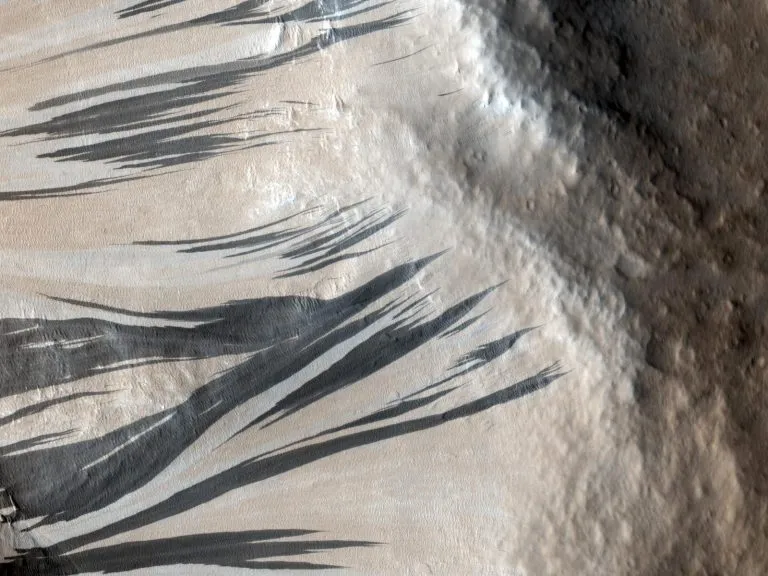
Last year, scientists were confused after analyzing photos of the Martian landscape obtained by NASA's Mars Odyssey orbiter at dawn. When they look at the surface with visible light - the kind that the human eye can feel - they can see the ghostly blue and white morning frost illuminated by the rising sun. However, when the camera was used more widely in orbit, including the ice layer, it did not appear.
Scientists know that what they see is ice that forms overnight, mainly from carbon dioxide - basically dry ice, which often appears in the form of ice rather than water ice on the red planet. But why is this dry frost visible in some places but not in others?

Recently published in Journal of geophysical research 》In a paper. These scientists have come up with a surprising answer, which can also explain how the dust avalanche that is reshaping the planet is triggered after sunrise.
Launched in 2001, Odyssey is NASA's longest lived Mars mission. It carries the thermal emission imaging system (Themis), an infrared, or temperature sensitive camera that provides a unique view of the Martian surface. Odyssey's current orbit provides a unique view of Mars at 7 a.m. local time.
Sylvain piqueux of NASA's Jet Propulsion Laboratory, who led the paper, said: "the morning orbit of Odyssey produces spectacular photos. We can see long shadows at sunrise because they extend on the surface."
Due to the very thin atmosphere of Mars (the density of the atmosphere is only 1% of the density of the earth), the sun quickly heated the frost formed overnight. It doesn't melt in the atmosphere, but evaporates in a few minutes.
Lucas Lange, a JPL intern who works with piqueux, first noticed that there are low-temperature features of frost in many places that are not visible on the surface. These temperatures occur tens of microns underground.

"Our first thought was that the ice might be buried there," Lange said. "There is a lot of dry ice near the poles of Mars, but we are looking closer to the equator of Mars, where it is usually too hot to form dry ice."
In their paper, the authors suggest that what they see is "dirty frost" - dry frost mixed with fine dust particles, which is masked in visible light but not in infrared images.
This phenomenon makes scientists suspect that "dirty frost" can also explain some dark stripes that can extend to 3300 feet (1000 meters) or more along the slope of Mars. They know that these stripes are basically caused by dust avalanches, which slowly reshape the entire slopes of Mars. Scientists believe that these dust avalanches may look like a dust River hugging the ground, releasing a fluffy string of material behind them. As the dust goes down the mountain in a few hours, it exposes stripes of dark matter below.
These dark stripes are different from the well-documented species called recurrent slope stripes, which occur repeatedly in the same place, season after season, lasting for weeks (rather than hours) at a time. Once thought to be the result of the slow seepage of salt water from the hillside, it is now generally believed that the repeated slope stripes are caused by the flow of dry sand or dust.
After plotting slope stripes for their recent study, the authors found that they often appear where there is morning frost. The researchers suggest that the fringes are due to the sufficient pressure generated by the evaporated frost to loosen the dust particles, leading to the occurrence of avalanches. These assumptions further prove how surprising the red planet is.
Chris Edwards, co-author of the paper at the University of Northern Arizona, said: "every time we send a mission to Mars, we will find new strange processes. We have nothing exactly like the slope stripes on earth. You must understand the fire star beyond your experience on earth."